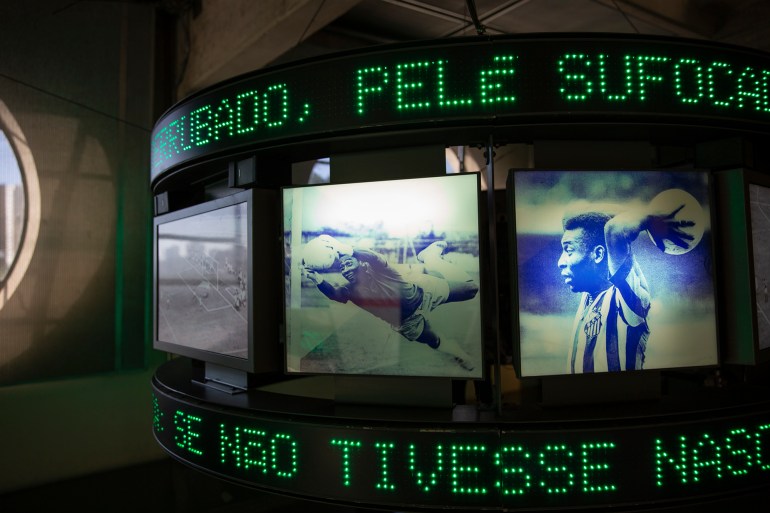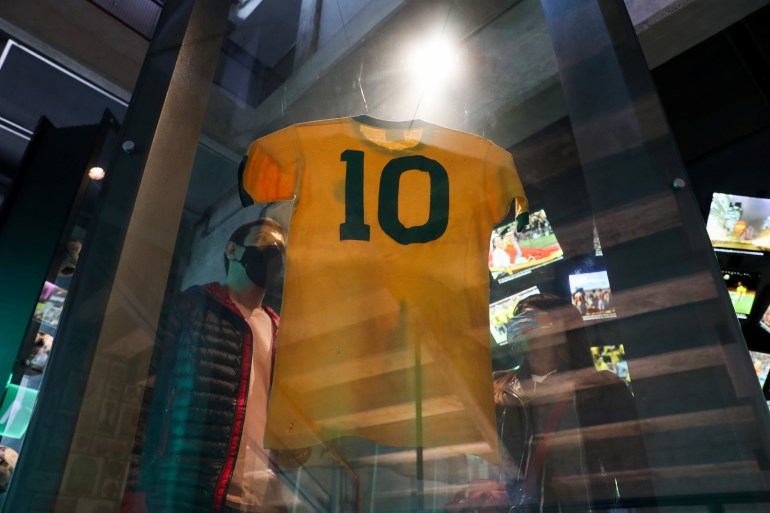Pelé – real name Edson Arantes do Nascimento – one of the greatest footballers the world had ever seen, died on Thursday at the age of 82.
Born in the state of Minas Gerais in 1940, Pelé’s family moved to a nearby city called Bauru looking for a better life. He grew up in poverty and his parents could not even afford a football. An old sock filled with newspapers was the first “ball” his magical feet kicked but it was enough for him to fall in love with the game and for people to start noticing he was different.
When Pelé was 15, a local coach, Waldemar de Brito, took him to play for the football club Santos. Upon arriving in the city that shares the name with the club, Brito told the coach, “This kid will be the best in the world.”
Within minutes, the coach was impressed with Pelé and signed him on the spot. This was 1956. Two years later, Pelé would be in Sweden, spearheading Brazil to a World Cup title, the first of six for the team. He scored two goals in the final against Sweden. He was still 17.
At the final whistle, the wonder kid fainted on the field while being carried by the celebrating crowd.
Pelé was famously easy-going, kind, joyful, and a reliable friend.
“Pelé was always a very nice guy. We would spend so much time talking. He didn’t have any star attitude,” Didi, 84, one of Pelé’s oldest friends and his barber of 55 years, told Al Jazeera.
“I tell my grandchildren that I had one client more famous than anyone else. This is a man who is known more all over the world than Coca Cola. So I feel proud of it and it’s very rare for someone to have a client like this.”
Pelé had a certain way of speaking Portuguese, something he would turn into a trademark. He would constantly finish his sentences with “entende?” which means “understand?”.
It seems he always wanted to make sure to facilitate conversations, just like he would smooth out his teammates’ game.
In addition to skills and charisma, a certain mysticism always surrounded the character of the King of Football. Pelé was from a city called Três Corações, which translates to Three Hearts.
One of his many famous quotes, made at his last match ever played in 1977 in New York, was honouring children and with his limited English, he just said “love, love, love.”

On the pitch, Pelé became an instant celebrity following the 1958 World Cup triumph. Upon returning to Brazil, he helped Santos build a dynasty, winning 25 titles in the 1960s. Despite being world-famous, Pelé kept living a down-to-earth life in Santos. He would share a guest house with other players and cycle around the city.
“The pay was pretty bad but he did it for love of the game and we had so much fun,” Carlos “Lala”, 86, a goalkeeper and Pelé’s former Santos teammate, told Al Jazeera.
Despite being a widely diverse country ethnically, Brazil is not often represented by people of colour. So having someone Black as its biggest celebrity and star had a cultural impact on the country.
Aside from being the world’s best footballer, Pelé also ventured into showbusiness. A lover of music, he recorded an album with Brazilian legendary singer Elis Regina and acted in a handful of movies, making him a pop star as well.
In 1962, Brazil won a second successive World Cup with an injured Pelé supporting the team.
It was in 1970, at the first World Cup broadcasted in colour, that Pelé put the cherry on top of his football legacy. The team that had Clodoaldo, Rivelino and Tostão, put in one of the most celebrated World Cup performances in history.
In the final, a 4-1 win over Italy, Pelé scored a header – the team’s opening goal – that some people said he managed by freezing midair. He celebrated the goal in his typical manner: Jumping and punching the air.
“I told myself before the game that Pelé is made of skin and bones just like everyone else. But I was wrong,” said Tarciso Burnigch, the Italian defender appointed to mark Pelé in the final.
That was Pelé’s 12th and final World Cup goal.
In 1969, he had become the first player to score 1,000 goals. The 1,000th goal was at the Maracanã, in Rio de Janeiro, known as the Mecca of Football.

In 1974, he left Santos and played his final years in New York, at a club called Cosmos.
It was the only team he played for other than Santos and Brazil’s national side.
“As we [the security team] were always with the team, traveling, at the games, we had a lot of contact with them, so we developed a friendship,” Pedro de Liberato, Pele’s security guard, and then his neighbour, told Al Jazeera.
“Pelé was always very joyful, always joking with people,” the 90-year-old added.
Pelé wore the number 10 jersey but he did not know which number he would have and was assigned 10 randomly.
The number 10 jersey has since then become associated with the world’s best – Maradona, Roberto Baggio, Zinedine Zidane and Lionel Messi are just some of them who have worn it.
Pelé retired after playing 1,363 games, winning 37 titles, scoring 1,281 goals, including 92 career hat-tricks.
He spent his post-football life involved in social activism, including being a UNESCO goodwill ambassador.
In 1995, he took public office as minister of sports, introducing the legislation that grants players their own rights after a certain age. Pelé also commented on games for television.
In recent years, Pelé struggled with his health. Aside from battling cancer, he also suffered from severe hip pain and spent most of his last years in a wheelchair.
